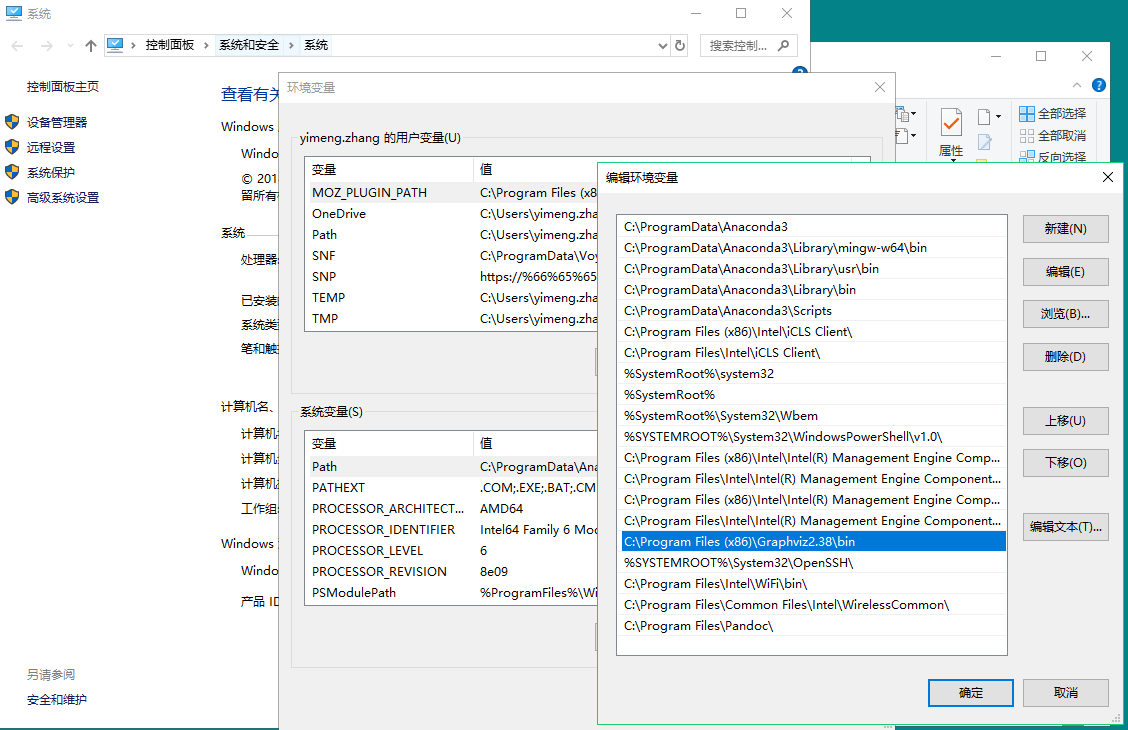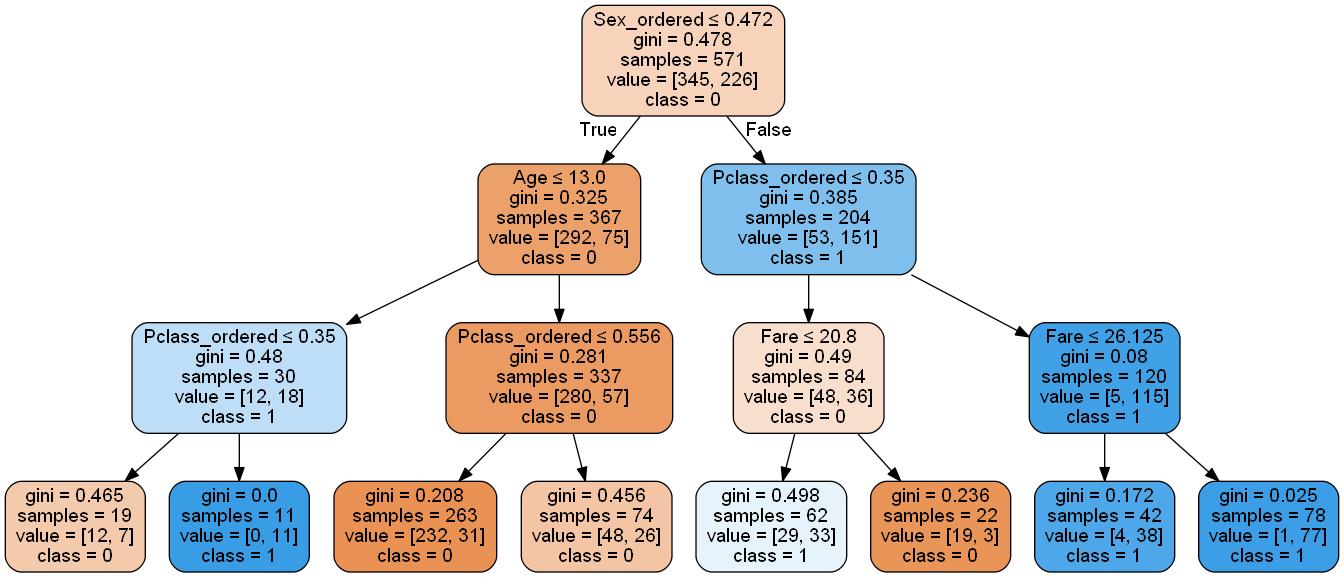A toolkit for extracting comprehensible rules and selecting the best performing rule set from tree-based algorithms, based on Skope-rules. Currently only supports 2-classes classification task.
Major groups of functionalities:
- Visualize tree structures and output as images;
- Rule extraction from trained tree models;
- Filter rules based on recall/precision threshold on a given dataset;
- Make predictions by rule voting.
Model supported:
- DecisionTreeClassifier/DecisionTreeRegressor
- BaggingClassifier/BaggingRegressor
- RandomForestClassifier/RandomForestRegressor
- ExtraTreesClassifier/ ExtraTreeRegressor
This project requires:
- Python (>= 2.7 or >= 3.3)
- NumPy (>= 1.10.4)
- SciPy (>= 0.17.0)
- Pandas (>= 0.18.1)
- Scikit-Learn (>= 0.17.1)
- pydotplus (>=2.0.2)
- graphviz (>=0.8.2)
Installing graphviz (for windows user):
-
Download and install executable from https://graphviz.gitlab.io/_pages/Download/Download_windows.html
-
Set the PATH variable as follows
-
Restart your currently running application that requires the path
-
pip install pydotplus
See Demo1 here for a detailed example.
First download the code into your project folder.
- Train or load a tree-based model. Having the dataset that is trained on is better.
import pandas as pd
import numpy as np
from sklearn.model_selection import train_test_split
from sklearn import tree,ensemble,metrics
from rule import Rule
from rule_extraction import rule_extract,draw_tree
# Train the model
model = tree.DecisionTreeClassifier(criterion='gini',max_depth=3)
model.fit(X_train,y_train)
- Extract all the rules from the tree (all paths from root node to leaves)
rules, _ = rule_extract(model=model,feature_names=X_train.columns)
for i in rules:
print(i)
# output
Sex_ordered > 0.4722778648138046 and Pclass_ordered > 0.3504907488822937 and Fare > 26.125
Sex_ordered <= 0.4722778648138046 and Age > 13.0 and Pclass_ordered <= 0.5564569681882858
Sex_ordered <= 0.4722778648138046 and Age <= 13.0 and Pclass_ordered <= 0.3504907488822937
Sex_ordered > 0.4722778648138046 and Pclass_ordered <= 0.3504907488822937 and Fare <= 20.800000190734863
Sex_ordered <= 0.4722778648138046 and Age > 13.0 and Pclass_ordered > 0.5564569681882858
Sex_ordered <= 0.4722778648138046 and Age <= 13.0 and Pclass_ordered > 0.3504907488822937
Sex_ordered > 0.4722778648138046 and Pclass_ordered > 0.3504907488822937 and Fare <= 26.125
Sex_ordered > 0.4722778648138046 and Pclass_ordered <= 0.3504907488822937 and Fare > 20.800000190734863- Draw the structure of the tree
# blue (class=1) denote the node make prediction of class 1
# orange (class=0) denote the node make prediction of class 0
# the darker the color, the more purity the node has
draw_tree(model=model,
outdir='./images/DecisionTree/',
feature_names=X_train.columns,
proportion=False, # show [proportion] or [number of samples] from a node
class_names=['0','1'])- Filter rules base on recall/precision on dataset
rules, rule_dict = rule_extract(model=model_tree_clf,
feature_names=X_train.columns,
x_test=X_test,
y_test=y_test,
recall_min_c0=0.9, # recall threshold on class 1
precision_min_c0=0.6) # precision threshold on class 1
for i in rule_dict:
print(i)
# return:(rule, recall on 1-class, prec on 1-class, recall on 0-class, prec on 0-class, nb)
('Fare > 26.125 and Pclass_ordered > 0.3504907488822937 and Sex_ordered > 0.4722778648138046', (0.328125, 0.9130434782608695, 0.9746835443037974, 0.6416666666666667, 1))
('Fare <= 26.125 and Pclass_ordered > 0.3504907488822937 and Sex_ordered > 0.4722778648138046', (0.21875, 0.875, 0.9746835443037974, 0.6062992125984252, 1))TODO

